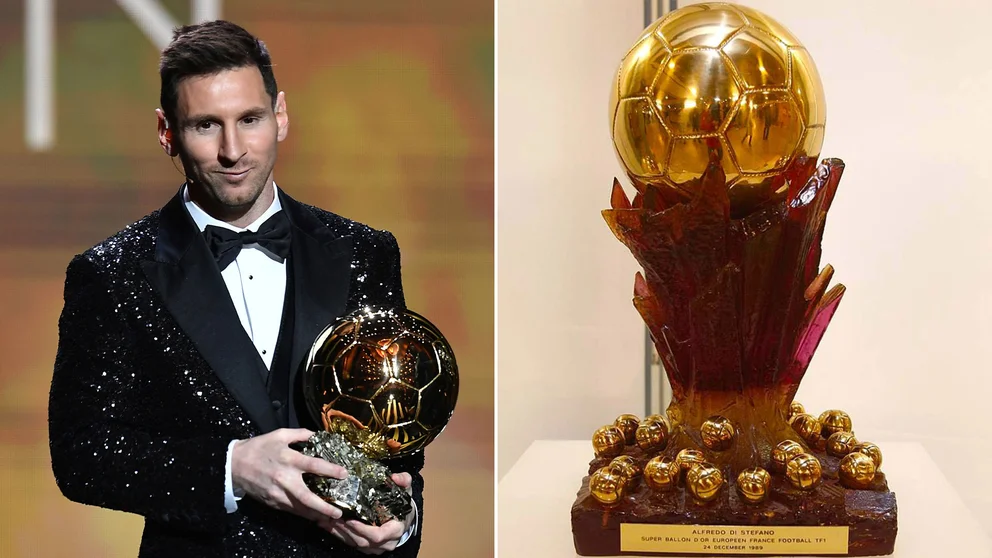Home » Messi and the Super Ballon d’Or

Messi and the Super Ballon d’Or: What is this award in football?
Messi has risen to the top of the world of football with his team’s victory at the 2022 World Cup, along with his native Argentina. For many, he could even retire now; he has won everything a footballer could want in his career, from the World Cup to the Champions League and even the Golden Ball. Not quite all, because there is a version of the sport’s most important individual award that the Argentine has not yet achieved. So let’s try to understand what the Super Ballon d’Or is, how it works, and how it could be won by Lionel Messi.
Messi and the Super Ballon d’Or: what it is, how it works, and how it is made
The Super Ballon d’Or is an award, also created by France Football, that has only been awarded once in history: to Alfredo Di Stefano in 1989. The Real Madrid legend had been active for several years, but was put in contention by the French magazine as he had won the Ballon d’Or several times in his career. In fact, the award could only be obtained by those who had won the best individual award in the world of football more than once in their careers. After that year, the Super Ballon d’Or was no longer awarded, but in recent days, given the great career of Lionel Messi, it is thought that France Football can reward the Argentine as it did more than 30 years ago with Di Stefano.
This is an unprecedented prize, which only the French periodical can decide to award again. Eventually, however, the success of La Pulce will have to pass through a jury that will decide whether he will be the winner. The result seems very obvious, but trying to imagine the other candidates, we would find ourselves faced with an award that could also be won by Cristiano Ronaldo, Ronaldo, and Van Basten. Unlike the original award, the Super Ballon d’Or trophy is made with a base of red stones, supported by a ball identical to that of the main prize.
Di Stefano, the Super Ballon d’Or, and other secondary prizes
Alfredo Di Stefano won the Super Ballon d’Or in 1989, the only year it was awarded. At the time, France Football’s award was intended only for European footballers, and Saeta Rubia (Blond Arrow) managed to win it because he had obtained Spanish citizenship in the past (and this also allowed him to win the Ballon d’Or in 1957 and 1959). Along with the legendary Real Madrid player, five other players who had won the Ballon d’Or more than once were also in the running: Johan Cruyff (1971, 1973, and 1974), Franz Beckenbauer (1972 and 1976), Kevin Keegan (1978 and 1979), Karl-Heinz Rummenigge (1980 and 1981), and Michel Platini (1983, 1984, and 1985).
Di Stefano won, overtaking Johan Cruyff and Michel Platini in the votes, who finished second and third, respectively. In that same year, however, the normal Ballon d’Or was also awarded, which was won by Van Basten (his second prize). The prizes associated with the France Football Trophy, however, do not end there because others have been awarded in history to various players who have written the history of this sport.
The first was for Diego Armando Maradona, who in 1996 won an honorary Ballon d’Or for his career (the Argentine, due to his nationality, has never been able to win the original). In 1999, however, the French magazine nominated Pelé for Player of the Century. All 34 Ballon d’Or winners were called to vote, despite some absences (Matthews, Sivori, and Best refused the invitation, while Yashin had died a few years earlier), which decreed the following classification: Pelé (122 points), Maradona (65 points), Cruyff (62 points), Di Stefano (44 points), and Platini (40 points).





